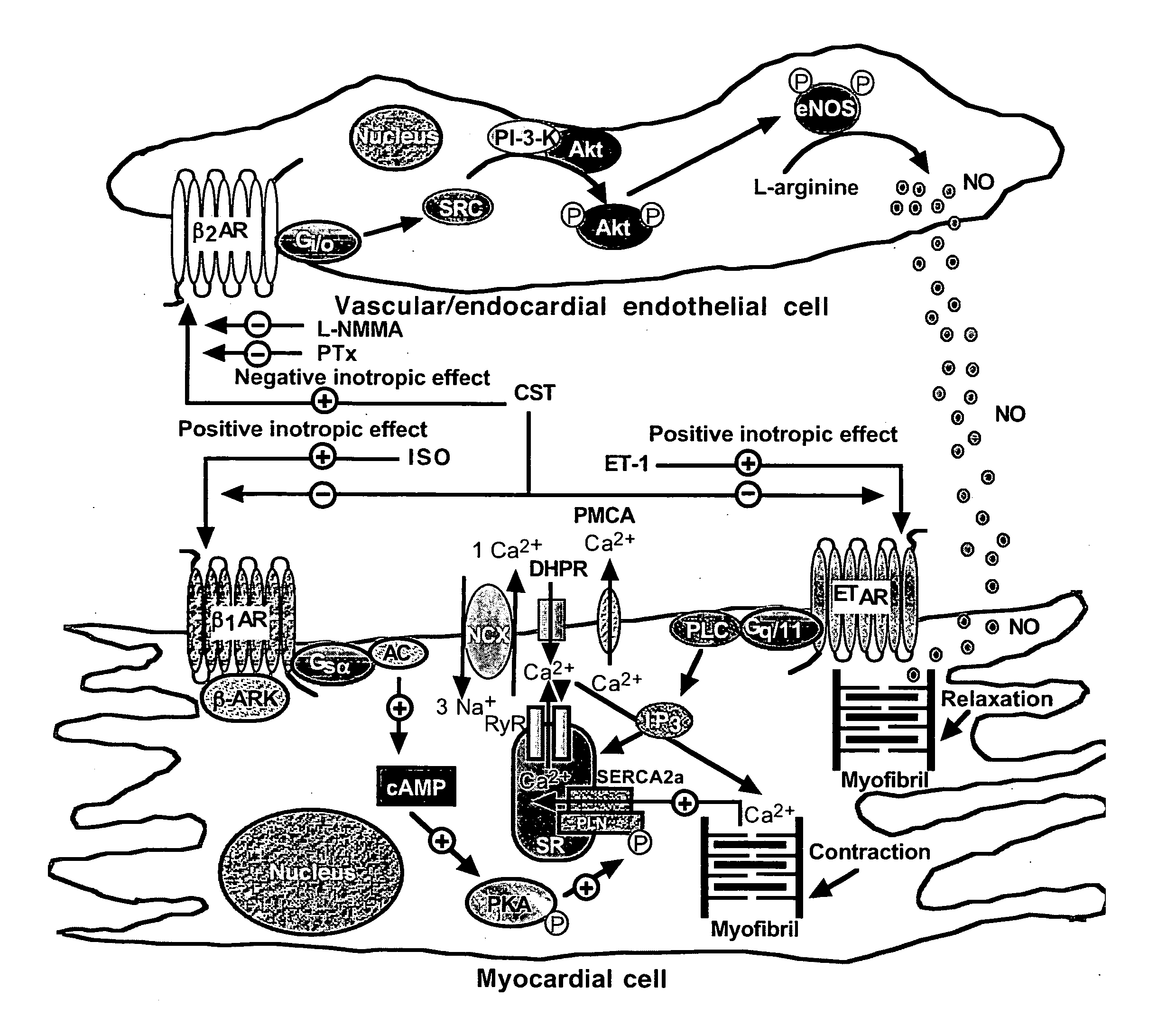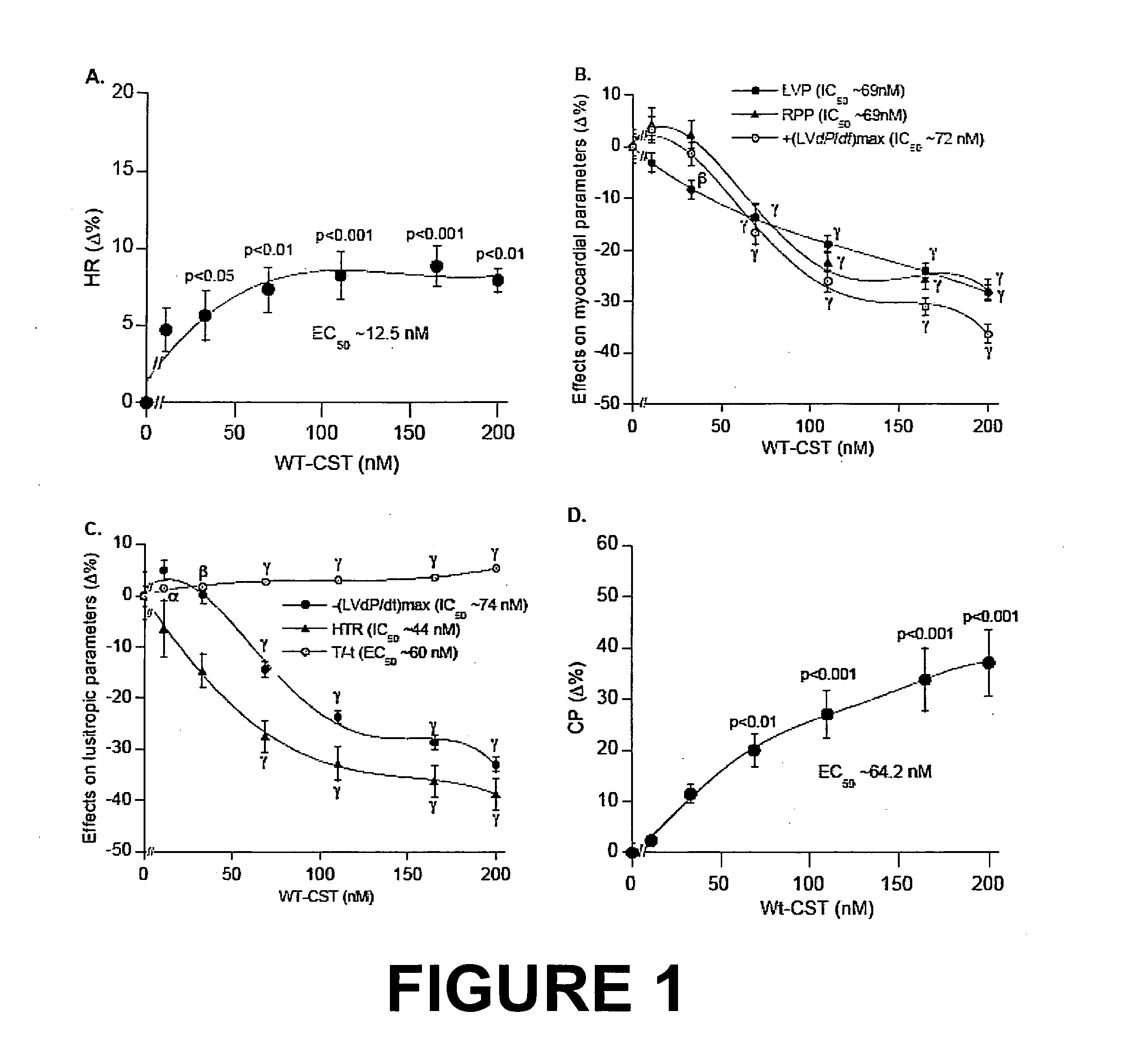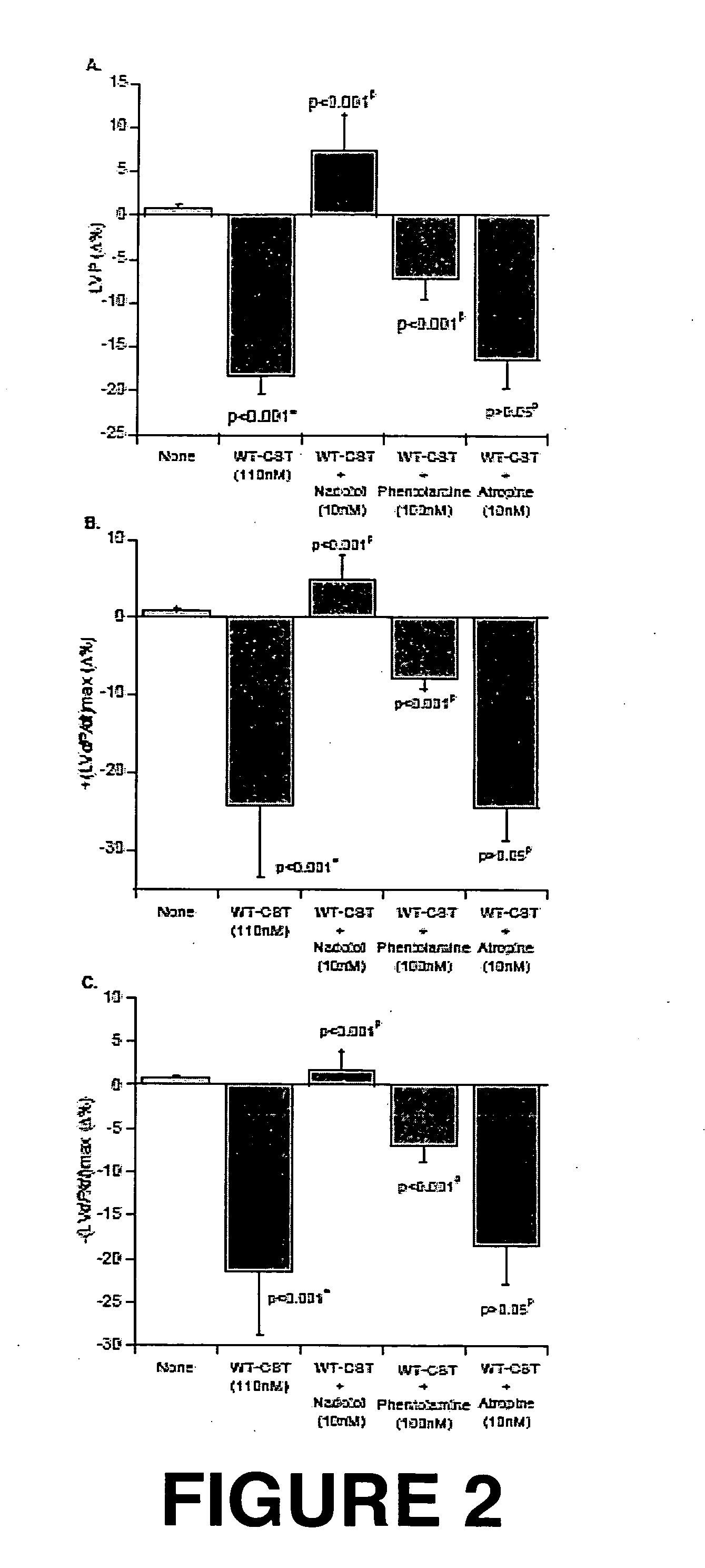Catestatin (CST) and its variants for treatment of cardiovascular and metabolic disorders
a catestatin and metabolic disorder technology, applied in the field of biochemistry and medicine, can solve the problems of increasing the risk of hypertension, and achieve the effect of reducing cst and high blood pressur
- Summary
- Abstract
- Description
- Claims
- Application Information
AI Technical Summary
Benefits of technology
Problems solved by technology
Method used
Image
Examples
example 2
Catestatin Acts as an Anti-Stress Peptide and Also Restores Baroreflex Sensitivity in Hypertensive Mice
MATERIALS AND METHODS
[0068]Animals. Chga knockout (KO) mice and their wild-type (WT) littermates were generated as described (13). All animals were housed on a 12 hr light dark cycle and fed a standard rodent chow. The Animal Care and Use Committee of University of California at San Diego approved all protocols for animal use and euthanasia in accordance with National Institute of Health guidelines. Both WT and KO mice (5-6 month old) in this study were from mixed (129 SvJ and C57BL / 6) genetic background.
[0069]Conscious mice. Measurement of BP and HR in immobilization stress-induced telemetered mice: BP & HR were measured by telemetry as described previously (13). The experiments were initiated 10 days after the surgery. Immobilization stress was initiated by placing mice in restrainer (Braintree Scientific Inc, Braintree, Mass.) at 10:00 AM and kept for 2 hrs for continuous record...
example 3
CST Widens Heart Rate Variability (HRV) in Hypertensive Mice
BACKGROUND
[0087]Cardiovascular performance is controlled by the autonomic nervous system (ANS). Beat-to-beat fluctuation in the heart rate (HR) is a balanced consequence of ANS tone to the heart, both sympathetic (increasing HR) and parasympathetic (decreasing HR). A decrease in heart rate variability (HRV) is longitudinally predictive of increased cardiovascular morbidity and mortality. Thus, we examined whether both short- and long-term HRV concerning temporal and spectral features recorded from the sedated mice to identify perturbations of the autonomic system in the chromogranin A knockout (CgA-KO) mice, which has earlier been reported to have echocardiographic abnormalities and prone to hypertension. Use of CST ameliorates both systolic and diastolic BP elevations (13). Since ANS status can be reliably monitored by analyzing time and frequency-domain characteristics of HRV, we sought to use the technology to evaluate f...
example 4
Catestatin Acts as an Angiogenic Peptide
MATERIALS AND METHODS
[0100]CST peptide and antiserum. Please see Example 2 for the details.
[0101]Cornea Neovascularisation Assay. Pellets containing 500 ng Catestatin were implanted in C57 / BL / 6J mice (age of 8 weeks) as described (36). On postoperative day 7 mice received an intravenous injection of 500 μg BS1 lectin conjugated to FITC (Vector Laboratories). After euthanasia, enucleated eyes were fixed in 1% paraformaldehyde, corneas dissected and examined by fluorescence microscopy.
[0102]Mouse hind-limb ischemia model. Male C57BL / 6 wild-type mice at the age of 12 months were subjected to unilateral hind-limb surgery. Briefly, the left femoral artery was exposed, ligated with 5-0 silk ligatures, and excised. Mice were injected with saline or 10 μg catestatin into thigh and calf muscles after operation and every other day for weeks 1 and 2 and 2 times per week for weeks 3 and 4. All further measurements and analyses were performed by investigat...
PUM
| Property | Measurement | Unit |
|---|---|---|
| Pressure | aaaaa | aaaaa |
| Level | aaaaa | aaaaa |
| Mechanical performance | aaaaa | aaaaa |
Abstract
Description
Claims
Application Information
 Login to View More
Login to View More - R&D
- Intellectual Property
- Life Sciences
- Materials
- Tech Scout
- Unparalleled Data Quality
- Higher Quality Content
- 60% Fewer Hallucinations
Browse by: Latest US Patents, China's latest patents, Technical Efficacy Thesaurus, Application Domain, Technology Topic, Popular Technical Reports.
© 2025 PatSnap. All rights reserved.Legal|Privacy policy|Modern Slavery Act Transparency Statement|Sitemap|About US| Contact US: help@patsnap.com



